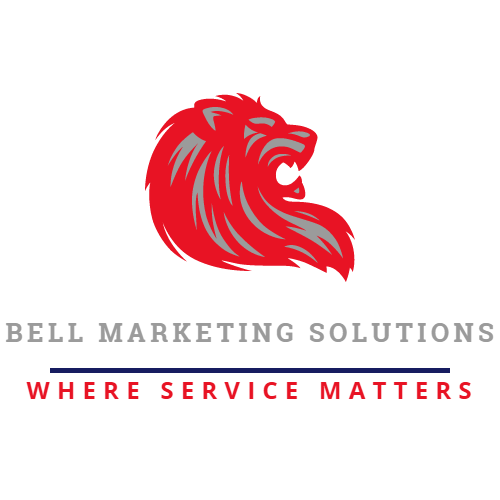As I sit here wrapping up this blog post, I’ve gotten stuck trying to come up with a snazzy, but concise, title.
As I sit here wrapping up this blog post, I’ve gotten stuck trying to come up with a snazzy, but concise, title.
So I turned to HubSpot’s AI Blog Writer for suggestions, prompting it with the command to generate headline ideas for a blog post about integrating AI tools into marketing processes.
This is just one way to leverage AI tools into your day-to-day workflow as a blog writer. Outside of blogging, AI plays a sizable role in marketing, from product management to SEO.
In this blog post, we’ll go over:
How Marketers are Using AI
Understanding Complex Topics
Marketers, such as Martina Bretous, editor of our Next in AI Blog, use AI to better understand complex topics.
“I will often go to ChatGPT and ask, ‘Explain X to me in layman’s terms,’ or ‘as if I were 5 years old.’ Usually when you read something online, you can’t always reach out to the author and get clarity. ChatGPT’s like my friend who helps me make sense of information in a language I can understand,” she said.
Tools like ChatGPT can provide explanations in simple terms, supporting marketers in comprehending information.
Automating Tasks
AI has the potential to streamline the way marketers work by automating tedious tasks, allowing them to focus on strategy and action. The automation of these tasks will be crucial in saving time and boosting efficiency.
Our State of AI Report finds that marketers save more than three hours per piece of content using AI automation.
“The main benefits of incorporating AI into streamlining processes are time savings, automation of mundane tasks, and increased efficiency,” said Irina Nica, product marketing manager at HubSpot.
“By leveraging AI, we can offload repetitive or time-consuming tasks to technology, allowing us to focus on more valuable and strategic work. This not only boosts productivity but also frees up our time to tackle projects that require human expertise and creativity.”
For example, Nica uses AI to transform meeting notes into actionable tasks or next steps.
“While this may seem like a small task, having an AI assistant by my side helps me complete it faster, allowing me to focus on the more exciting aspects of my job, such as developing GTM strategies and crafting positioning and messaging frameworks,” Nica explains.
Indeed, her sentiments are echoed in our State of AI Report that shows 95% of AI-using professionals say AI helps them spend less time on manual tasks and more time on the most important parts of their role (88%), the parts of their job they enjoy most (85%), and on the creative aspects of their role (83%).
Writing Better Copy
In order to be a good marketer, you need to be good at writing.
As a product marketing manager, Nica also leverages generative AI to assist with writing.
“I rely on generative AI to assist me with writing to help improve my productivity. Writing is a big part of my job, whether it’s creating documentation, cross-functional communication, blog posts, or social media content. AI has become my trusty companion in handling some of the routine writing tasks,” Nica says.
Content Creation
Marketers use generative AI for an array of content creation purposes, from generating ideas for blog posts to drafting social media copy.
The image below shows just one example of how AI tools like HubSpot’s Content Writer can generate copy for blog posts, emails, social media posts, and web pages.
Get started with HubSpot’s Free AI Content Writer
Aligning Web Content with Search Intent
Every blogger needs to understand SEO if they want to create content that drives page views and engagement. In fact, one of the reasons I’m writing this post is because it relates to topics and questions our readers frequently search on Google.
By analyzing search trends and patterns, AI algorithms can identify popular search queries and relevant keywords related to a particular topic. This helps bloggers understand what users are searching for and enables them to choose the right keywords to target in their content.
Moreover, AI-powered tools can evaluate existing content and provide suggestions for improving its relevance to search intent.
By analyzing the context, structure, and language of a blog post, these tools can identify areas for improvement and suggest modifications to optimize the content for search engines. This could include adding additional keywords, reorganizing paragraphs, or enhancing the overall readability.
A Step-by-Step Guide to Implementing AI in Your Marketing Processes
1. Identify potential use cases for AI.
Start by brainstorming with your team to identify potential use cases where AI can add value in streamlining your marketing processes. Consider tasks that are repetitive or time-consuming, such as content creation, email drafting, social media posting, or lead generation.
“This should be a collaborative effort, so involve your team members to gather their ideas as well. From that list, select a maximum of three high-impact use cases to begin with,” suggests Nica.
“For example, you might consider using AI for content creation on your blog, creating a GTP to convert meeting notes into tasks, drafting sales outreach emails, answering customer queries, generating blog images, or even creating social media posts for launch campaigns,” she adds.
Pro tip: Check out HubSpot’s library of content creation tools.
2. Evaluate the benefits of AI.
Consider the benefits of incorporating AI into your marketing processes. The main advantages are time savings, automation of mundane tasks, and increased efficiency. By leveraging AI, you can offload repetitive tasks and focus on more valuable and strategic work.
According to Bretous, AI can help you make more time to strategize and take action, and spend less time on tedious tasks.
“I recommend looking at your own to-do list and seeing what tasks could be assisted by AI. It’s a low-stakes way to get comfortable using the technology and it might end up shifting the way you work. You’d be surprised how many AI tools are out there that can help with everyday, tedious tasks,” she explains.
3. Explore AI tools.
Exploring different AI tools can help you better understand how to incorporate them into your workflow.
For example, Campaign Assistant can help streamline the process for executing campaigns by generating copy for your assets.
Recently, I used Campaign Assistant to write an email promoting a winter holiday sale for my shop selling art prints and shirts.
To help the AI generate effective copy, I specified what my campaign was about, key points to focus on, the call-to-action, and writing style.
Within seconds, I received ready-to-use copy for my email campaign. I might make some tweaks, but the basic structure is there.
By understanding the unique capabilities of each AI tool, you can leverage them to streamline specific tasks and processes in your marketing strategy, ultimately saving time and improving efficiency.
4. Start with low-stakes tasks.
If you’re new to AI or unsure where to start, this approach allows you to get comfortable using AI technology without high stakes.
Begin by identifying tasks on your to-do list that are repetitive or time-consuming. These tasks could include social media scheduling, blog post editing, or lead generation research.
Research and select cheap or free AI tools that specialize in automating these specific tasks. By starting with low-stakes tasks, you can get comfortable with AI technology and experience the benefits firsthand without risking major campaign elements. This approach allows you to gradually build trust in AI and expand its usage to more critical marketing processes over time.
5. Implement AI for high-impact use cases.
Once you’ve identified the use cases and tasks that can be streamlined using AI, dig test out the highest impact AI solutions first.
Once you’ve implemented an AI solution, you’ll also want to measure the results within one to three months of implementation to determine the tool’s effectiveness for your team.
6. Monitor and optimize AI performance.
Continuously monitor the performance of your AI implementations and make necessary optimizations.
“Whatever use case you pick, measure the results, learn from the experience, identify what worked best, and then move on to the next use case,” Nica recommends. “The key is not to overwhelm yourself with endless possibilities, but to be strategic in your AI investments.”
Keep track of metrics such as time saved, increased efficiency, and the impact on your marketing efforts. To do this, regularly gather feedback from your team and end-users to ensure that AI is delivering the expected benefits and addressing the pain points effectively.
7. Expand AI implementation.
As you gain confidence and success with AI in streamlining your marketing processes, consider expanding the implementation to other use cases. Keep exploring new AI tools and technologies that can improve your marketing efficiency and effectiveness.
Stay up to date with the advancements in AI for marketing to ensure you’re leveraging the latest innovations to drive results.
Get Started With AI Tools
Ultimately, AI tools add value by saving time and streamlining marketing processes. They can help you break down complicated topics, automate mundane tasks, and generate content.
Get started with HubSpot’s AI tools.
![]()


![A Guide to Integrating AI Tools in Your Marketing Processes [New Data + Expert Tips]](https://blog.hubspot.com/hubfs/64_Small%20Business%20Marketing%20Strategy.png)

